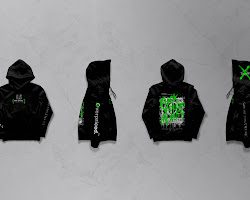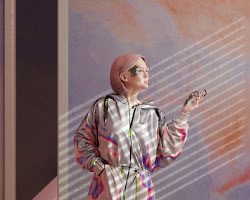Top 10 Reasons Fashion Brands Are promoting NFTs

NFTs, or non-fungible tokens, are a type of digital asset that represents ownership or proof of authenticity of a unique item or piece of content using blockchain technology. While cryptocurrencies like Bitcoin and Ethereum are fungible, meaning they can be exchanged on a one-to-one basis, NFTs are designed to be non-fungible, meaning each token is distinct and cannot be exchanged on a like-for-like basis.
The concept of NFTs gained significant attention and popularity in the art and collectibles world, but they can represent a wide range of digital and physical assets. NFTs can be used to tokenize various items such as digital artwork, music, videos, virtual real estate, virtual goods in video games, domain names, and even real-world assets like real estate or luxury goods.
NFTs are built on blockchain technology, typically using the Ethereum blockchain, although other blockchain platforms like Binance Smart Chain and Flow are also used for NFT transactions. Blockchain technology ensures the uniqueness, provenance, and immutability of NFTs. Each NFT contains a unique identifier and ownership information, which is stored on the blockchain, making it easily verifiable and preventing unauthorized duplication or alteration.
The ownership and transfer of NFTs are facilitated by smart contracts, self-executing contracts with predefined rules and conditions encoded within them. Smart contracts automatically execute transactions when the conditions specified within them are met. In the case of NFTs, smart contracts handle the transfer of ownership and manage the royalties or commissions for creators or original owners when the NFT is resold or transferred.
One of the key features of NFTs is their ability to provide creators with greater control and monetization opportunities for their digital creations. Artists and creators can mint their work as NFTs, assign a value to them, and sell them directly to collectors on various NFT marketplaces. They can also program royalties into the smart contracts, ensuring that they receive a percentage of future sales whenever their NFT is resold on the secondary market.
The growing popularity of NFTs has also led to a surge in interest from collectors and investors. NFT marketplaces act as platforms where buyers and sellers can trade NFTs. Some well-known NFT marketplaces include OpenSea, Rarible, SuperRare, and NBA Top Shot. These platforms allow users to browse, buy, sell, and trade NFTs using cryptocurrency.
Critics of NFTs raise concerns about their environmental impact, as the energy consumption of blockchain networks like Ethereum has come under scrutiny. The process of minting and trading NFTs requires significant computational power, which consumes a considerable amount of energy. However, efforts are being made to develop more energy-efficient blockchain solutions and explore alternative platforms with lower environmental footprints.
In summary, NFTs are unique digital assets that leverage blockchain technology to represent ownership or proof of authenticity of various items or content. They have gained attention for their potential to revolutionize the art world, empower creators, and enable new forms of digital ownership and monetization. However, the space is still evolving, and it remains to be seen how NFTs will continue to shape the digital landscape in the years to come.
Also read: NFTs In The Digital Fashion: Redefining The Concept Of Ownership
Importance of NFTs for Fashion Brands
NFTs have emerged as a significant development in the fashion industry, offering unique opportunities for fashion brands to engage with their customers, enhance brand value, and explore new revenue streams. Here are several key aspects that highlight the importance of NFTs for fashion brands:
1. Authenticity and Provenance: NFTs provide an innovative solution to the issue of authenticity in the fashion industry. Counterfeit products and knockoffs have long been a challenge for brands, eroding their reputation and causing financial losses. By minting NFTs for their limited-edition or exclusive products, fashion brands can create a digital certificate of authenticity. These NFTs can be easily verified on the blockchain, allowing consumers to confirm the legitimacy and provenance of their purchases.
2. Digital Ownership and Collectibility: NFTs enable fashion brands to extend their offerings beyond physical products into the digital realm. Brands can tokenize unique digital fashion items, such as virtual clothing, accessories, or even virtual fashion experiences. These digital fashion NFTs can be collected, traded, and displayed in virtual worlds, social media platforms, or gaming environments. This allows fashion enthusiasts to express their individuality and style in the digital space, while also strengthening their connection to the brand.
3. Limited Editions and Exclusivity: NFTs provide a platform for fashion brands to release limited editions or exclusive digital fashion collections. By creating scarcity and exclusivity, brands can tap into the growing demand for unique and rare digital assets. Collectors and fashion enthusiasts are attracted to the idea of owning a one-of-a-kind digital fashion item or being part of an exclusive community associated with a particular brand. NFTs allow fashion brands to leverage this trend and generate additional revenue streams through the sale of these limited digital fashion pieces.
4. New Revenue Streams and Monetization: NFTs open up new avenues for revenue generation for fashion brands. In addition to the initial sale of NFTs, brands can earn ongoing royalties whenever their NFTs are resold on the secondary market. This provides an opportunity for brands to benefit from the increasing value and demand for their digital fashion assets. Furthermore, fashion brands can explore collaborations with artists, designers, and influencers to create co-branded or limited-edition NFT collections, expanding their reach and attracting new audiences.
5. Enhanced Brand Engagement and Storytelling: NFTs offer a unique medium for fashion brands to engage with their customers and tell compelling stories. Brands can create immersive experiences around their NFTs, incorporating multimedia elements like videos, music, or augmented reality. By providing behind-the-scenes access, virtual fashion shows, or interactive experiences related to the creation of their NFTs, fashion brands can deepen the connection between consumers and their brand, fostering loyalty and brand advocacy.
6. Sustainability and Circular Economy: NFTs align with the growing emphasis on sustainability and the circular economy within the fashion industry. By creating digital fashion items and experiences, brands can reduce their environmental footprint associated with physical production and distribution. NFTs also enable brands to explore new business models, such as renting or leasing digital fashion items, promoting a more sustainable and inclusive approach to fashion consumption.
Overall, NFTs offer fashion brands a range of opportunities to innovate, engage with customers in new ways, and monetize their digital assets. As the technology continues to evolve and consumer adoption of NFTs increases, fashion brands that embrace this trend have the potential to differentiate themselves, strengthen their brand value, and tap into new revenue streams in the ever-evolving digital landscape.
Also read: NFTs And Luxury Goods: How NFTs Can Be Used To Create Unique And Exclusive Luxury Goods
Top 10 Reasons why Fashion Brands are promoting NFTs
From digital clothing to exclusive experiences, NFTs are giving fashion brands a new way to connect with consumers and generate revenue.
Here are the top 10 reasons why fashion brands are promoting NFTs:
- To create scarcity and exclusivity. NFTs are unique digital assets that cannot be replicated, which makes them perfect for creating scarcity and exclusivity. This can be a valuable marketing tool for fashion brands, as it can help them to create a sense of demand and excitement around their products.

- To offer new customer experiences. NFTs can be used to offer new and innovative customer experiences. For example, fashion brands can use NFTs to create digital clothing that can be worn in virtual worlds, or they can use NFTs to give customers access to exclusive events or experiences.
- To generate revenue. NFTs can be a new source of revenue for fashion brands. For example, brands can sell NFTs of their designs, or they can use NFTs to create membership programs that give customers access to exclusive benefits.

- To connect with a younger audience. NFTs are popular among younger consumers, so they can be a way for fashion brands to connect with this audience. By using NFTs, brands can show that they are innovative and forward-thinking, which can appeal to younger consumers.
- To track ownership and authenticity. NFTs can be used to track ownership and authenticity of digital assets. This can be a valuable tool for fashion brands, as it can help them to prevent counterfeiting and ensure that customers are buying genuine products.

- To create a more sustainable fashion industry. NFTs can be used to create a more sustainable fashion industry. For example, brands can use NFTs to track the provenance of their products, which can help to reduce waste and ensure that products are made in an ethical way.
- To create a more immersive shopping experience. NFTs can be used to create a more immersive shopping experience. For example, brands can use NFTs to create virtual showrooms that customers can explore, or they can use NFTs to give customers access to exclusive content.

- To build a community of fans and collectors. NFTs can be used to build a community of fans and collectors around a fashion brand. This can be a valuable way for brands to connect with their customers and generate excitement around their products.
- To experiment with new technologies. NFTs are a new technology, and fashion brands are experimenting with ways to use them. This can be a way for brands to stay ahead of the curve and explore new ways to engage with their customers.

- To stay ahead of the competition. The fashion industry is constantly evolving, and NFTs are one of the latest trends. By embracing NFTs, fashion brands can stay ahead of the competition and ensure that they are not left behind.
These are just a few of the reasons why fashion brands are promoting NFTs. As the technology continues to evolve, it is likely that we will see even more innovative and exciting ways for fashion brands to use NFTs.
Benefits of using NFTs by Fashion Brands
Fashion brands can enjoy several benefits by leveraging NFTs (non-fungible tokens) in their operations and engagement with customers. Here are some key advantages of using NFTs in the fashion industry:
1. Proof of Authenticity: Counterfeit fashion products have been a longstanding challenge for brands, leading to revenue loss and damage to brand reputation. NFTs provide an immutable proof of authenticity by establishing a unique digital record on the blockchain. Customers can verify the authenticity of a product by checking its associated NFT, ensuring they are purchasing genuine items.
2. Limited Editions and Exclusivity: NFTs enable fashion brands to create limited editions or exclusive collections, catering to customers who seek unique and rare items. By tokenizing these offerings, brands can add a layer of scarcity and exclusivity, attracting collectors and fashion enthusiasts. This strategy can increase demand, drive sales, and foster a sense of prestige around the brand.
3. New Revenue Streams: NFTs introduce novel revenue streams for fashion brands. In addition to the initial sale of NFTs, brands can earn ongoing royalties from secondary market transactions. Each time an NFT is resold, a smart contract can automatically trigger a percentage-based royalty payment to the original creator or brand. This revenue-sharing mechanism allows brands to benefit from the increasing value and popularity of their NFTs over time.
4. Enhanced Customer Engagement: NFTs provide a unique way to engage with customers and build a loyal community around a brand. Brands can organize virtual events, auctions, or contests centered around their NFTs, offering customers exclusive access or rewards. NFTs can also serve as tickets to special fashion events or provide VIP experiences, strengthening the bond between customers and the brand.
5. Brand Storytelling and Digital Experiences: NFTs enable fashion brands to tell compelling stories and create immersive digital experiences. Brands can accompany their NFTs with multimedia content such as videos, animations, or augmented reality (AR) experiences. This enhances the brand narrative, captivates customers, and offers an interactive and immersive way to showcase the creativity and craftsmanship behind the fashion items.
6. Sustainability and Circular Economy: NFTs align with the fashion industry’s increasing focus on sustainability and the circular economy. By creating digital fashion items, brands reduce the environmental impact associated with physical production and distribution. Additionally, NFTs facilitate the exploration of rental or leasing models for digital fashion, promoting a more sustainable approach to fashion consumption and reducing waste.
7. Access to New Audiences: NFTs provide fashion brands with the opportunity to reach new audiences and demographics. The growing interest in NFTs has attracted a diverse community of collectors, enthusiasts, and investors. By participating in NFT marketplaces and collaborations with artists or influencers, fashion brands can extend their brand reach and engage with customers who are actively involved in the digital art and collectibles space.
8. Protection of Intellectual Property: NFTs can serve as a means to protect and manage intellectual property for fashion brands. By tokenizing digital assets and attaching ownership rights to NFTs, brands can establish clear ownership and copyright claims. This helps combat plagiarism, unauthorized use of designs, and infringement of intellectual property rights.
Overall, NFTs offer fashion brands a range of benefits, including improved authenticity verification, new revenue streams, enhanced customer engagement, and the ability to tell captivating brand stories. By leveraging NFTs, fashion brands can embrace innovation, strengthen their brand identity, and stay at the forefront of the evolving digital landscape.
Also read: NFTs And The Fashion Industry: Creating Unique Digital Identities For Consumers
Future of NFTs for Fashion Brands
The future of NFTs (non-fungible tokens) in the fashion industry holds immense potential for innovation and transformation. Here are some key aspects that highlight the potential future developments and trends of NFTs for fashion brands:
1. Virtual Fashion and Digital Wearables: NFTs can pave the way for the widespread adoption of virtual fashion and digital wearables. As virtual worlds, gaming environments, and augmented reality experiences continue to evolve, fashion brands can create and sell digital clothing, accessories, and other virtual fashion items as NFTs. Customers can customize their virtual avatars or digital identities by owning and displaying unique digital fashion pieces. This digital fashion market offers fashion brands new revenue streams and opportunities to engage with customers in the emerging metaverse.
2. Enhanced Digital Ownership and Interoperability: NFTs are likely to evolve to offer enhanced digital ownership and interoperability. Currently, NFTs are primarily associated with specific platforms or ecosystems. However, efforts are underway to develop cross-platform standards and protocols that enable NFTs to be more fluidly transferable across different marketplaces and virtual environments. This interoperability would allow fashion brands to reach larger audiences and increase the value of their NFTs by enabling seamless trading and showcasing across various platforms.
3. Fashion Brand Collaborations and Partnerships: NFTs provide a fertile ground for fashion brand collaborations and partnerships with artists, designers, celebrities, and influencers. Co-branded or limited-edition NFT collections can offer unique experiences and products that merge fashion, art, and digital creativity. Collaborations can drive brand exposure, attract new audiences, and foster innovation in design and storytelling. Such partnerships can also help fashion brands tap into the existing fan bases and communities of artists and influencers, leading to increased brand awareness and sales.
4. Sustainability and Circular Economy Initiatives: NFTs have the potential to support sustainability and circular economy efforts within the fashion industry. Brands can explore renting or leasing digital fashion items through NFTs, allowing customers to enjoy virtual fashion experiences without the need for physical production. This approach reduces waste, promotes responsible consumption, and aligns with the growing interest in conscious and sustainable fashion practices. Additionally, NFTs can serve as a medium for brands to communicate their sustainability efforts, supply chain transparency, and ethical practices, further engaging environmentally conscious consumers.
5. Integration of NFTs with Physical Fashion: The integration of NFTs with physical fashion items is another exciting direction for the future. Brands can use NFTs to provide additional value and unique experiences to customers who purchase physical products. For example, NFTs can grant access to exclusive events, behind-the-scenes content, or personalized perks. Brands may also leverage NFTs as a way to certify the authenticity and provenance of physical items, making it easier for customers to verify the genuineness of their purchases.
6. Enhanced Fan Engagement and Loyalty Programs: NFTs offer fashion brands the opportunity to deepen their relationships with customers and build strong fan communities. Brands can design loyalty programs that reward customers with exclusive NFTs based on their purchasing behavior or engagement levels. Owning these unique NFTs can unlock exclusive benefits, discounts, or access to limited-edition releases. This gamification of customer loyalty can foster a sense of belonging and encourage repeat purchases, ultimately strengthening brand loyalty.
7. Advancements in Blockchain Technology: The future of NFTs for fashion brands will be intertwined with advancements in blockchain technology. As blockchain technology evolves, scalability, energy efficiency, and reduced transaction costs are expected to improve. This will address some of the current challenges associated with NFTs, such as high gas fees and environmental concerns. Additionally, emerging blockchain platforms and protocols dedicated to NFTs, with optimized features and functionalities for fashion brands, may arise, providing tailored solutions to meet the specific needs of the industry.
In summary, the future of NFTs for fashion brands holds exciting prospects for virtual fashion, digital ownership, collaborations, sustainability initiatives, and enhanced customer engagement. As technology, creativity, and consumer behaviors continue to evolve, fashion brands that embrace the potential of NFTs are poised to lead the industry’s digital transformation and create new avenues for growth and innovation.
mermaid from space NFT project and Eco friendly Merch explained 🧜♀️💞♻️🌍 Many of my rare NFTs come with custom upcycled art fashion, in this video I try to explain wtf that means. 🚀✨🧜♀️ pic.twitter.com/N5RZI5zkAw
— +mermaidfromspace.eth (@mermaidfromspac) June 29, 2023
Also read: NFTs And The Fashion Industry: Creating Unique Digital Identities For Consumers



























































